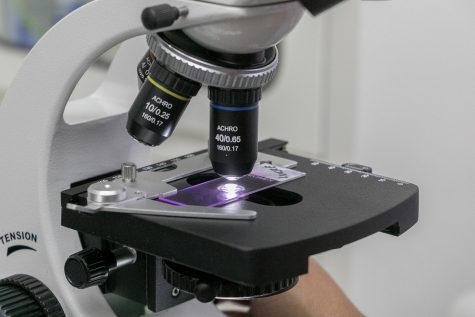University slated for increased funding after academic improvement
March 22, 2015
Millions of dollars may be looming in FAU’s horizon. The university improved by 13 points on the Board of Governors’ performance-funding model, going from last place out of 11 public universities to tied for sixth.
Universities that demonstrate excellence and improvement share money allocated by the state. With a score of 37 points, FAU is eligible to share money with the top eight universities.
The performance-funding model incorporates 10 metrics, which are used to judge all 11 universities by giving them scores ranging from one to five.
Metrics one through eight are the same across the board (FAU’s scores are in bold):
- Percent of bachelor’s graduates employed and/or continuing their education further one year after graduation: 3
- Median average wages of undergraduates employed in Florida one year after graduation: 4
- Average cost per undergraduate degree to the institution: 3*
- Six-year graduation rates (full time/part time): 5*
- Academic progress rate (second year retention with GPA above 2.0): 0
- Bachelor’s degree awarded in areas of strategic emphasis (such as STEM): 5
- University access rate (percent of undergraduates with Pell grant): 5
8a.) Graduate degrees awarded in areas of strategic emphasis (such as STEM): 4
8b.) Freshmen in top 10 percent of graduating class (Only for New College of Florida)
9.) Percent of bachelor degrees without excess hours: 3
10.) Bachelor’s degrees awarded to minorities: 5
Metrics nine and 10 are specific to each university’s mission and decided upon by the Board of Governors and Board of Trustees.
(* means the score is based on improvement and not excellence.)
Schools that attain a score below 25 points total are at risk of losing money. Last year, FAU had a score of 24 and was set to lose $7 million in funding.
FAU came in second for biggest improvement with an increase of 13 points, behind the University of West Florida, which improved by 16 points.
Both universities had low performance in 2014 and had to develop improvement plans, which would not only help improve their score for the next year, but allow them to reclaim half the money. FAU launched its plan on June 18, 2014.
The plan intended to raise metrics four and five, where FAU scored zero points. This year FAU has once again scored zero points for metric five (second-year retention with GPA above 2.0). It went from a zero in metric four (six-year graduation rates) to a perfect score of five.
The university met this target by hiring “more than two dozen advisors trained in the ‘appreciative advising’ model, a proactive approach to advising of in-depth academic and career counseling,” according to FAU’s press release on the improvement. The university hired 13 academic advisers in December 2014, and 13 more in May 2015.
In addition to the new advising system, FAU implemented step-by-step guidelines for timely graduation, summer programs for at-risk freshmen and a program to help incoming students determine their major early. An in-depth look at these programs can be found here.
The Board of Governors’ performance-funding model was implemented to make universities more accountable for their performance through the incentive of additional funding.
Brittany Davis, director of communications for State University System of Florida, stated via email that the program is “the Board’s response to a challenge by the Governor and Legislature to demonstrate maximum accountability and provide the best possible return on investment for students, families and taxpayers.”
President John Kelly shared in the press release that the improvement is “merely a start,” and his goal is to “make FAU the fastest-improving university in America. This ranking shows we’re well on our way.”
















